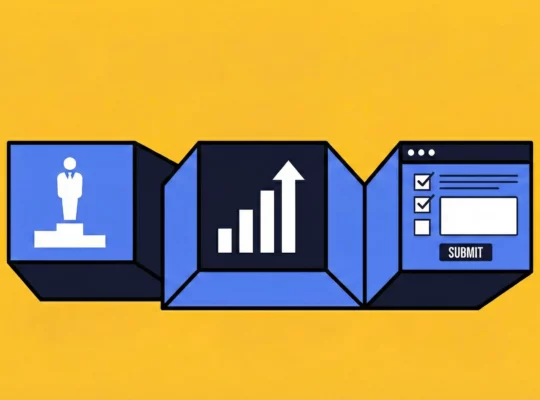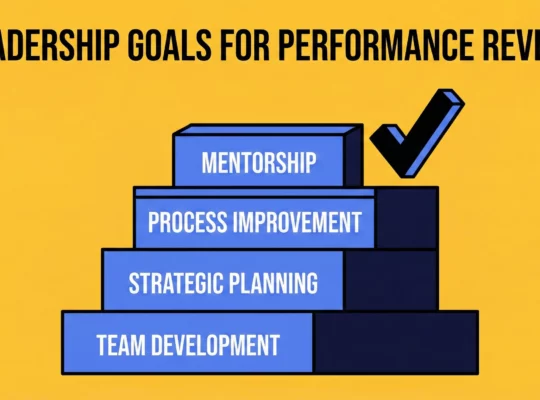Check-ins are one of the most effective ways to stop conflict at work before it ever starts. At Review.jobs, we believe that regular, honest employee reviews can reveal underlying tensions early, helping teams stay productive and connected.
Conflict at work is more than just an inconvenience—it’s expensive, demoralizing, and disruptive. If you wait for issues to escalate to HR complaints or intervention meetings, you’ve already missed the moment to make a real difference. That’s where proactive systems like employee review check-ins come in, giving company leaders a window into what’s working and what’s not—before it hits the fan.
Let’s break down how Review.jobs makes this process simple, safe, and smart for your entire organization.
Table of Contents
- Understanding Conflict in the Workplace
- The Impact of Conflict on Productivity and Morale
- Why Traditional Conflict Resolution Isn’t Enough
- The Preventative Power of Employee Reviews
- Communication Strategies During Conflict
- Improving Job Satisfaction Through Open Dialogue
- Conflict Management Styles and the Role of Leadership
- Real-World Benefits: Preventing Conflict Before It Starts
- How to Get Started with Review.jobs
- FAQs
Understanding Conflict in the Workplace
What is Conflict at Work?
Conflict at work happens when two or more individuals have opposing views, goals, or emotional responses that interfere with collaboration or productivity.
The most common culprits for conflit at work are:
- Poor communication
- Ambiguity in roles or responsibilities
- Personality differences
- Competing priorities
- Lack of feedback loops
Unchecked, these issues pile up and lead to resentment, team friction, and even turnover.
Types of Conflict at Work
1. Task Conflict
Task conflict occurs when employees disagree about the “how” of a project—methods, procedures, or strategies. While not always harmful, it becomes toxic if not resolved quickly.
2. Relationship Conflict
This is driven by emotional friction or clashing personalities. It often feels personal and tends to disrupt team morale more significantly than task conflict.
3. Interpersonal Conflict
Interpersonal conflict happens when miscommunications or mismatched values lead to friction. This type is often harder to detect until it’s already escalated.
The Impact of Conflict on Productivity and Morale
Conflict can lower productivity, increase absenteeism, and tank morale. Teams that constantly feel tension often miss deadlines, make mistakes, and burn out faster.
Here’s how conflict affects workplace dynamics:
| Conflict Outcome | Effect on Productivity | Effect on Morale |
| Miscommunication | Leads to errors, duplicated work, missed deadlines, and confusion around priorities. | Employees feel ignored, underappreciated, or excluded. Frustration builds. |
| Personality Clashes | Team members may avoid collaboration or refuse to participate fully, slowing progress. | Creates tension, resentment, and a “cliquey” atmosphere. |
| Poor Leadership Response | Conflict is allowed to fester, spreading dysfunction across the team and derailing progress. | Employees lose confidence in leadership, resulting in disengagement and mistrust. |
| Unclear Roles | Tasks fall through the cracks or are unnecessarily repeated, reducing overall efficiency. | Employees feel uncertain and unsupported, which can lead to anxiety. |
| Lack of Feedback | Problems go unaddressed, and performance declines without course correction. | Team members feel invisible and undervalued, which kills motivation. |
| Competing Agendas | Resources are misallocated, and progress stalls due to constant push-pull dynamics. | Individuals feel their work is being undermined or disrespected. |
| Cultural or Value Clashes | Can lead to decisions being questioned or resisted, hampering innovation. | Undermines belonging and creates a sense of alienation. |
Disputes in the workplace may even deter parents from attending events, impact the attendance of volunteers, and make ministries or nonprofits struggle with daily check-ins and people management.
Why Traditional Conflict Resolution Isn’t Enough
Most traditional conflict resolution strategies focus on cleanup, not prevention. Mediation and HR involvement come after a breakdown in communication has already occurred.
By then, the damage—lost time, lost trust, and lost productivity—is already done. Relying solely on in-person meetings or email threads to resolve deep-seated issues is like applying a band-aid to a broken bone.
Employees often skip early check-ins or hide their true feelings during performance reviews. Without anonymous or structured feedback options, leadership may never get the full picture.
The Preventative Power of Employee Reviews
What is Review.jobs?
Review.jobs is a certified employee review management platform designed to help organizations proactively address workplace issues by collecting, managing, analyzing, and showcasing authentic employee feedback. As the only AFNOR-certified platform for employee reviews, it ensures that all feedback is credible and reliable, providing businesses with trustworthy insights into their workplace culture.
How Employee Feedback Prevents Conflict
By facilitating regular check-ins with employees through anonymous and verified reviews, Review.jobs enables organizations to detect and address potential conflicts before they escalate. Here’s how:
- Early Detection of Issues: The platform’s AI-powered sentiment analysis identifies trends and areas of concern, allowing HR teams to intervene proactively.
- Transparent Communication: Centralized dashboards provide a 360-degree view of employee sentiment, fostering open dialogue between management and staff.
- Tailored Insights: Customizable reports and analytics help organizations understand specific team dynamics and address unique challenges effectively.
- Enhanced Trust: By showcasing authentic employee reviews on company profiles and career pages, businesses build credibility and attract top talent, reinforcing a positive workplace environment.
Implementing Review.jobs into your organizational strategy not only aids in conflict prevention but also strengthens your employer brand, leading to improved employee satisfaction and retention.
Communication Strategies During Conflict
Good communication prevents misunderstandings and helps de-escalate conflict in real time. Here’s how leadership should respond during challenging moments:
- Listen actively – don’t interrupt; reflect and repeat what was said.
- Remain calm – avoid matching the other person’s emotional intensity.
- Seek understanding – ask clarifying questions, especially in heated situations.
- Set expectations – clearly outline what happens next.
Employee reviews provide leaders with themes to guide coaching conversations and reduce assumptions, especially when it’s hard to check in with each person daily.
Improving Job Satisfaction Through Open Dialogue
When employees have a voice, they’re more likely to stay engaged—even during periods of conflict or transition. Creating a reliable check-in process allows team members to speak up without fear, and regular updates help you act on feedback without delay.
Here’s how check-ins improve satisfaction:
- Employees feel valued and understood
- Leaders can spot morale dips early
- Teams build stronger interpersonal connections
Whether you’re managing people online or in person, regular check-ins lead to a healthier workplace culture for every child, parent, team, or volunteer.
Conflict Management Styles and the Role of Leadership
Leadership styles can either de-escalate or intensify conflict. The Thomas-Kilmann model outlines five primary styles:
| Style | Description | When to Use |
| Avoiding | Delaying confrontation | Low-stakes or emotionally charged |
| Accommodating | Putting others’ needs first | Maintaining harmony |
| Competing | Asserting authority | Emergencies or clear right/wrong |
| Compromising | Finding middle ground | Quick, fair solutions |
| Collaborating | Seeking win-win solutions | Best for long-term success |
Review.jobs helps leaders identify their team’s preferred styles through employee reviews, helping them adjust their communication methods accordingly.
Real-World Benefits: Preventing Conflict Before It Starts
Let’s say your company has recently rolled out a cross-functional initiative involving multiple departments. At first, enthusiasm is high—but within a few weeks, productivity stalls. Team members stop showing up to planning check-ins, and tensions bubble up in meetings. You start hearing complaints about unclear roles and duplicate work.
Instead of waiting for a formal HR report, your company uses Review.jobs to issue a quick check-in survey. Within days, the results reveal the friction points: vague leadership direction, confusion over responsibilities, and mismatched expectations between departments.
With that insight, leadership takes immediate action:
- Clarifies responsibilities and realigns priorities across teams
- Offers targeted training based on department-specific needs
- Improves communication with scheduled check-ins and shared planning documents
Suddenly, the project regains momentum. Employees feel heard, roles are clear, and collaboration picks up. Team morale rebounds, and performance improves across the board. What could have turned into a full-blown conflict was stopped before it started—all because employee voices were captured at the right time.
How to Get Started with Review.jobs
Getting started with Review.jobs is fast, flexible, and designed for busy corporate teams. Whether you lead HR, employer branding, or internal culture initiatives, the platform makes it simple to launch a powerful employee review process.
Step 1: Create your company profile
Sign up in minutes and begin setting up your secure, branded employer review environment. No tech skills required—just plug in your info and get started!
Step 2: Collect authentic employee reviews
Choose how and when to gather feedback. Use flexible tools like custom review forms, anonymous satisfaction surveys, and even API integrations to tailor your approach. Employees can submit feedback anonymously and safely, encouraging real honesty and clarity.
Step 3: Manage and analyze responses in one place
Access all employee reviews through a centralized dashboard. You’ll be able to label, organize, and respond to feedback while tracking key sentiment trends and satisfaction metrics across locations, departments, or timeframes.
Step 4: Showcase your employer brand
Publish verified employee reviews on your career site or share them across social media channels to boost your reputation and attract top talent. With seamless website integration, Review.jobs lets you highlight what your team loves about working at your company.
Whether you’re supporting a distributed workforce, multiple office locations, or hybrid teams, Review.jobs offers the tools to collect, manage, and showcase employee reviews at scale—helping your organization resolve problems before they turn into conflict.
Ready to make check-ins a culture-building asset? Start your journey with Review.jobs today.
Conflict doesn’t have to be inevitable. With regular check-ins and structured feedback using Review.jobs, you can detect issues early, prevent misunderstandings, and create a workplace that’s built on trust, communication, and connection.
Let Review.jobs help you build the kind of workplace people are excited to be part of—every single week.
FAQs
1. What are the most common types of workplace conflicts, and how do they differ?
- Conflicts of Interest: These arise when employees compete for the same opportunities, such as promotions or special projects, leading to rivalry and potential adversarial behavior.
- Interpersonal Conflicts: These occur due to misaligned expectations or differing perceptions about workplace relationships, such as authority vs. collaboration.
- Value Conflicts: These emerge from discrepancies in personal or professional values, either between employees or in relation to company principles.
2. What steps should managers take to address conflicts at work promptly and effectively?
- Act Quickly: Address the conflict as soon as it is identified to prevent escalation, allowing for a brief cooling-off period if emotions are high.
- Facilitate Open Dialogue: Conduct individual interviews to understand each party’s perspective and follow up with a group meeting to encourage honest communication.
- Maintain Professionalism: Stay neutral, avoid emotional reactions, and model constructive behavior during discussions.
- Propose Balanced Compromises: Offer equitable solutions that require concessions from all involved parties to foster cooperation and mutual gains.
3. What mistakes should managers avoid when resolving workplace conflicts?
- Reacting emotionally or losing their temper can escalate the situation.
- Taking sides compromises neutrality and authority as a mediator.
- Delaying resolution leads to strained relationships and decreased productivity.
- Ignoring internal communication and its impact on the employer brand.
- Using aggressive or confrontational tactics can hinder cooperation and trust.





